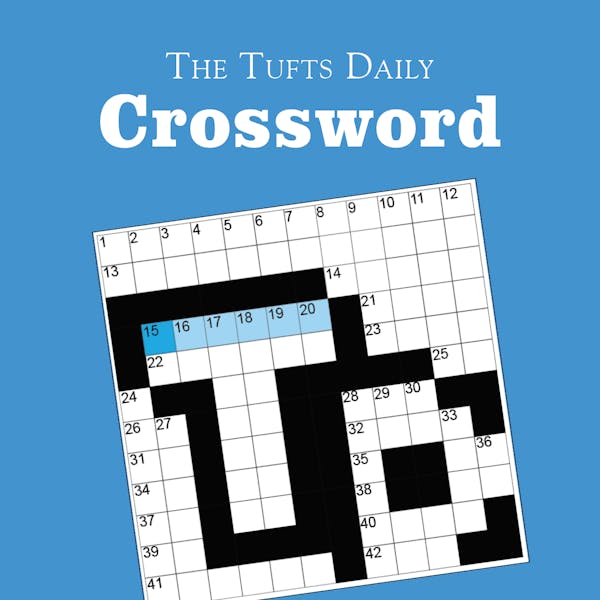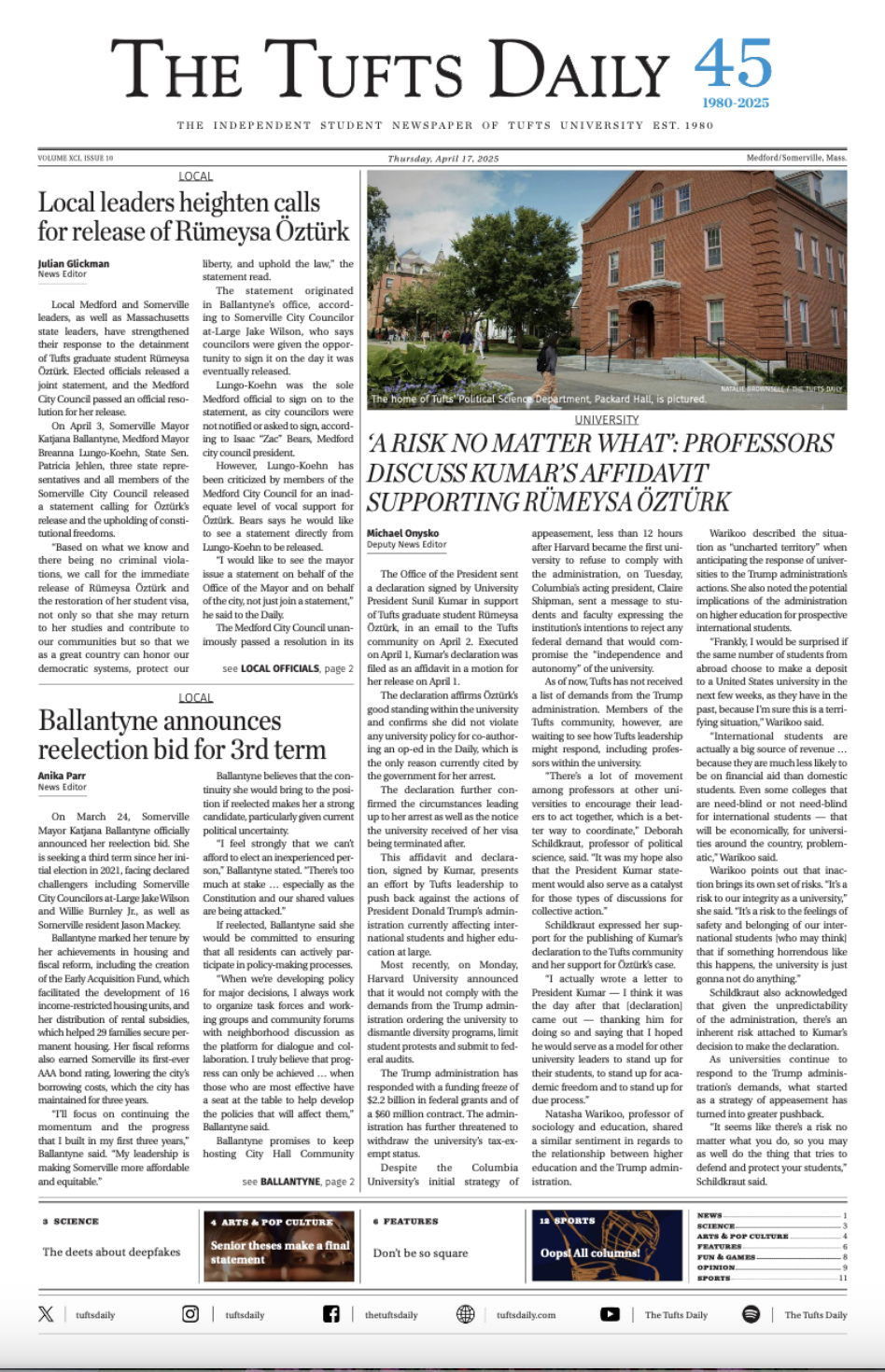At the “Hands Off!” protest in Boston on April 5, Chantal Zakari, SMFA professor of the practice, was among the crowd. In 2020, Zakari taught a course called “Subversive Graphics: Socially Engaged Art,” which discussed recent artistic protest movements and art methods, including street graphics, books and short-lived print. Using this expertise, she gave her insight on the posters for the “Hands Off!” protest.
“There is something that is coming directly from the heart,” Zakari said. “But there is also quite a lot of creativity in how people want to write and organize the letters and how they want to put the message on the board.”

Considering that protest signs are typically spontaneous, short-lived and seen briefly, Zakari offered advice on how to make messages resonate.
“The most effective ones are actually the shortest messages. Humor is incredibly important. The way that the letters are organized in an interesting way — and if there is an image, if that image is a detailed image or [if] it has been turned into a symbol, that makes it much more interesting and engaging,” Zakari said.

Humor was a conscious choice for some protesters. One high schooler, Fin, held a sign saying “electile dysfunction,” which he thought of because he is a “pretty big fan of puns,” and he wanted to “be funny.” Further along the route, a man named Scott held a piñata of President Donald Trump wearing flaming underwear over his head, with a speech bubble of Trump’s Project 2025 quote. Scott explained that he got the pinata in 2016 and uses different speech bubbles at different protests.
Zakari offered design advice when she saw a photo of a sign saying, “How will Fox News twist this story?” Zakari said that the writing is “Black on yellow — that’s the highest contrast you can get. … One test you do when you’re designing something is you squint your eyes. … If things pop out you can see. … I would say they should have emphasized Fox News a little bit more.”
Toward the front of the crowd, a protester named David held a poster titled “Malice in Blunderland,” drawing connections between the Trump administration and “Alice in Wonderland” characters. Zakari noted the importance of dissemination when seeing David’s poster.
“I can’t read the text … on a sign that I see for 20 seconds … but I do want to make a picture,” Zakari said.
According to Zakari, social media equips street signage with new power.
“Thousands of people in your own town see them, they photograph, they post on Instagram and then that sign has a second life on social media.”

Adam Lane, a cartoonist and editorialist, was aware of this potential when designing his “Trumpy Monster” sign.
“We live in the age of the attention economy,” Lane said. “It really matters that you create content that goes viral and can actually change people’s hearts and minds.”
When she saw his poster, Zakari commented on its relevance.
“This is a character that every American kid knows, and there’s a lot of humor in this,” she said.
She went on to explain that the crowding of the letters suggests “urgency,” a characteristic of protest signage.
Yet, Zakari also emphasized that, despite the positive power of social media, this exposure can cause targeted groups such as immigrants and international students to “feel unsafe being in public space with their own voice.”
Considering this threat, April Woodard, an artist and activist, said, “Many of us have different privilege, so it’s critical for people to stand up for other people.”

Zakari’s subversive graphics course discussed making art as a cultural “outsider” versus as an “insider” to an affected community. Collaboration between cultural insiders and outsiders creates a dynamic that helps people understand things differently and facilitates projects. Even when protesters didn’t intentionally form an insider-outsider team, the making of protest signage was often a collective, community-based effort. One high schooler made a poster for his friend, another made matching signs with her mom who was protesting in Vermont and a married couple brainstormed slogans together. Protester Becca loves to collage and spent months collecting newspaper clippings for her sign. When talking about her efforts, she said, “It’s about us. It’s not about the government taking over.”
“I thought the march was really powerful because there were so many messages,” Zakari said. “For this to be collectively creating that multiplicity of voices, I think it’s important that each one of the signs had an individual issue.”
Zakari described protest signs as the “speech balloon of literally the voice of that individual. … The more personal the message is, the more significant it is.”
Photo gallery, below, by Veronika Coyle.






